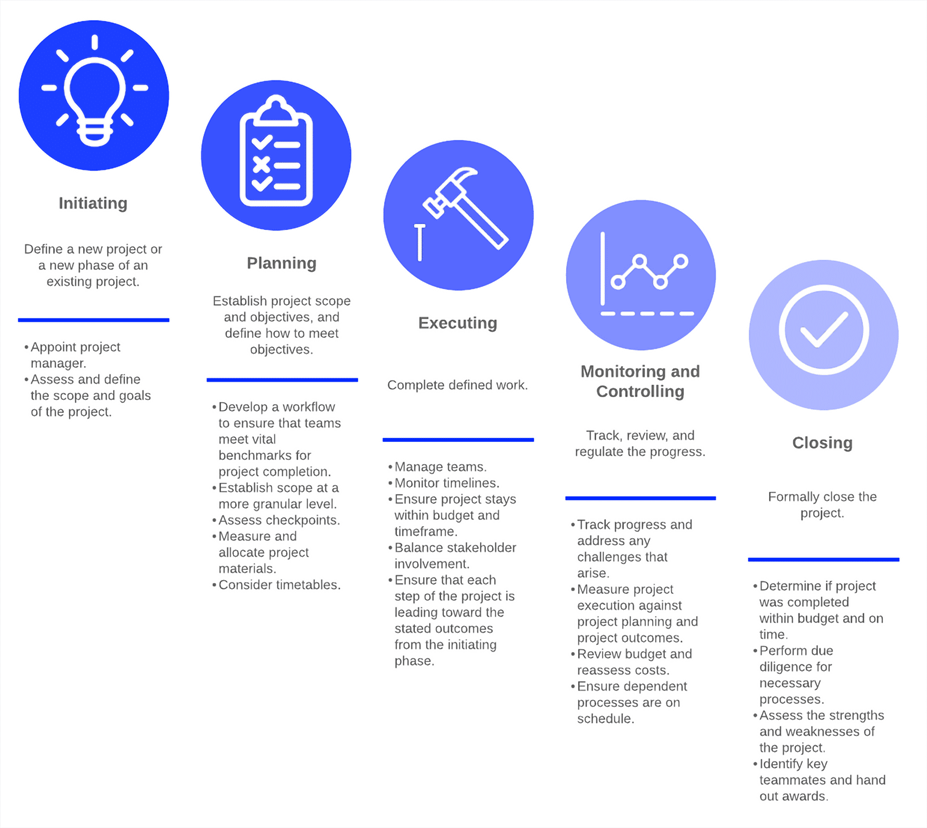Students will gain an understanding of the
nature of project risk and the type of issues the Project Director and Project
Manager should review prior to their respective project phases commencing.
1. A
Message from Your lceted
2. What
is a Project Risk And Where Do They Exist
3. Risk
Identification
4. Risk
Assessment, Mitigation and Control Ownership
5. The
Risk Register – Structure & Function
6. Examples
of a Risk Register
7. Summary
from your lceted
A Message from Your lceted
When starting a new project - it is vital
for the Project Director to identify and assess what could possibly go wrong
during the life of the project and to identify what strategies and actions to
put in place to reduce the impact of these risks should they eventuate.
Effective risk management will result in the
project team and project stakeholders understanding which risks are the most
significant and how they should be managed.
Risk Analysis and Management is an essential
project management activity that reduces the number of unexpected negative
events during a project’s lifetime. and gives the project team the tools and
strategies required to mitigate the impact of such events.
Let’s look at the process of risk management
and a range of common project risks you as a Project Manager you would be
accustomed to seeing in your project risk register.
What is a Project Risk And Where Do They Exist
They can be found in every aspect of a
project and can occasionally originate from entirely external to the project
and the project team's activities. Risks can be classified and ordered in a
number of ways, but it can be helpful to use something like the PMBOK knowledge
areas as a structure to focus attention across all aspects of the project.
No matter how rigorous the risk planning
process is, not every risk will be identified, similarly not every risk
identified will require its own management plan because it can be tracked and
managed within normal project processes, such as project meetings.
Risk Identification
There will always be a risk that the Project
Scope has not been resolved and scope creep or scope change will disrupt the
delivery and impact on time and cost.
Similarly, it is rare for a project to not
have risk exposure to time and cost. These standard risks are predictable and
can usually be managed using routine project management procedures and
protocols.
It is essential, however, for the Project
Manager to also identify the risks that are unique to the project. These risks
may need specialized assessment and management. These unique risks are usually
identified through discussion with the broader project stakeholder group where
specialist knowledge of the needs of the project leads to recognition of
elements that potentially put the project at risk. This risk identification can
occur through one-on-one discussion or through a risk management workshop that
brings together all project stakeholders to review the project objectives and
the issues that potentially impact its success.
Using the PMBOK knowledge areas as a
structure for discussion helps to focus attention across all aspects of project
delivery.
Risk Assessment, Mitigation and Control Ownership
Risk assessment is measuring the likelihood
of something occurring and the impact of the issue on the project if/when it
occurs.
This assessment will determine whether
specific action will be required to avoid its occurrence or reduce its impact.
The action taken to limit the occurrence and
reduce the impact is also referred to as mitigation. Some mitigation actions
are routine such as discussion of project safety and project progress at
regular project meetings. Other risks will require their own management plans
and specifically curated and reported activities.
While the Project Director and Project
Manager must have general oversight across the entire risk profile, all project
risks should have a designated control owner.
1. The
control owner is responsible for devising and activating the specific risk
management protocols and for tracking and reporting on the outcomes.
2. The
control owner will depend on the nature of the risk and who within the
stakeholder group is best able to understand and control that aspect of the
project.
3. The
control owners will typically be line or discipline managers.
The Risk Register – Structure & Function
The risk register is used to list all of the
identified project risks and to measure their likelihood and impact on the
project.
The register records, in summary, form all
the proposed actions to be taken to avoid a given risk or reduce its impact.
The register provides a reference point for the whole project team and
identifies who within the team is responsible for establishing and managing the
controls.
The register provides at a glance an
indication of which risks are a priority for the project and which require
targeted management, and which can be managed under business-as-usual
protocols.
The risk register is an essential reference
document for periodic review of a project’s risk profile – reviewed typically
at key project stage milestones. The review of the projects risk profile should
assess:
1. Whether
the risk remains
2. Whether
there has been any change to likelihood or impact
3. Whether
the risk management strategies, controls and control ownership remain sufficient.
4. Whether
any new risks have emerged
Examples of a Risk Register
What follows is an example of a typical
project risk register.
Review each of the identified risks and
consider:
1. What
circumstances might cause the likelihood or impact to change and how that might
drive the controls that need to be implemented?
2. Whether
any additional control activities could be employed to reduce the impact
3. Who
in the project team is best placed to own the risk and its controls.
4. What
would have happened to the project if this risk and its controls had not been
made part of a risk management strategy?
Download the document by clicking the link
below and supporting our work.
Summary from your lceted
Many
of these risks are dealt with under business as usual processes – that’s why we
have these routine processes. A project’s unique and technically specific risks
are the ones most likely to catch the project team unaware. These risks can
only be identified and assessed through broad engagement with all project
stakeholders. It’s the Project Managers' responsibility to ensure that
appropriate risk controls and control ownership are established. The risk
management process will assist the project team deal with most eventualities.












No comments:
Post a Comment